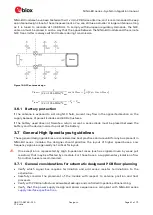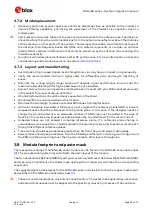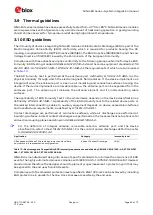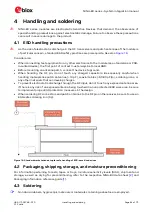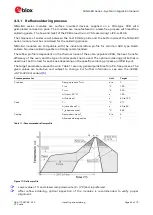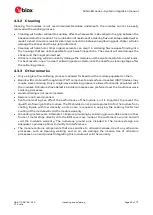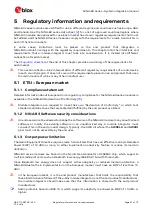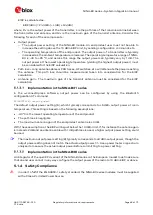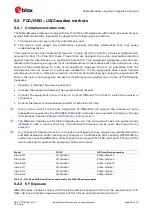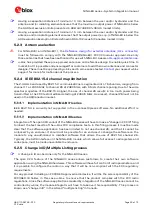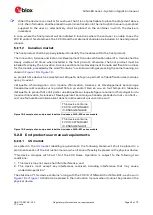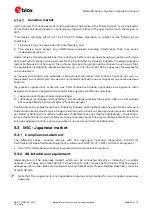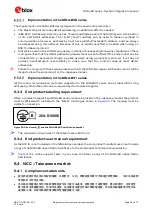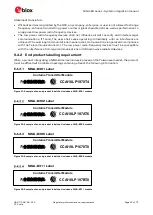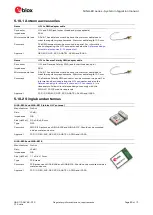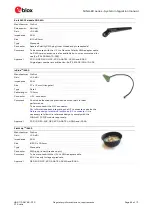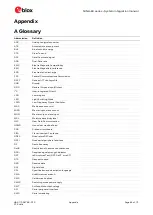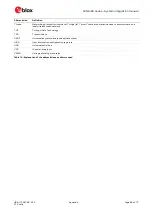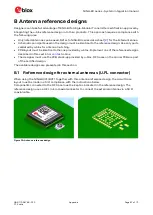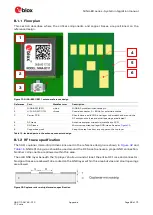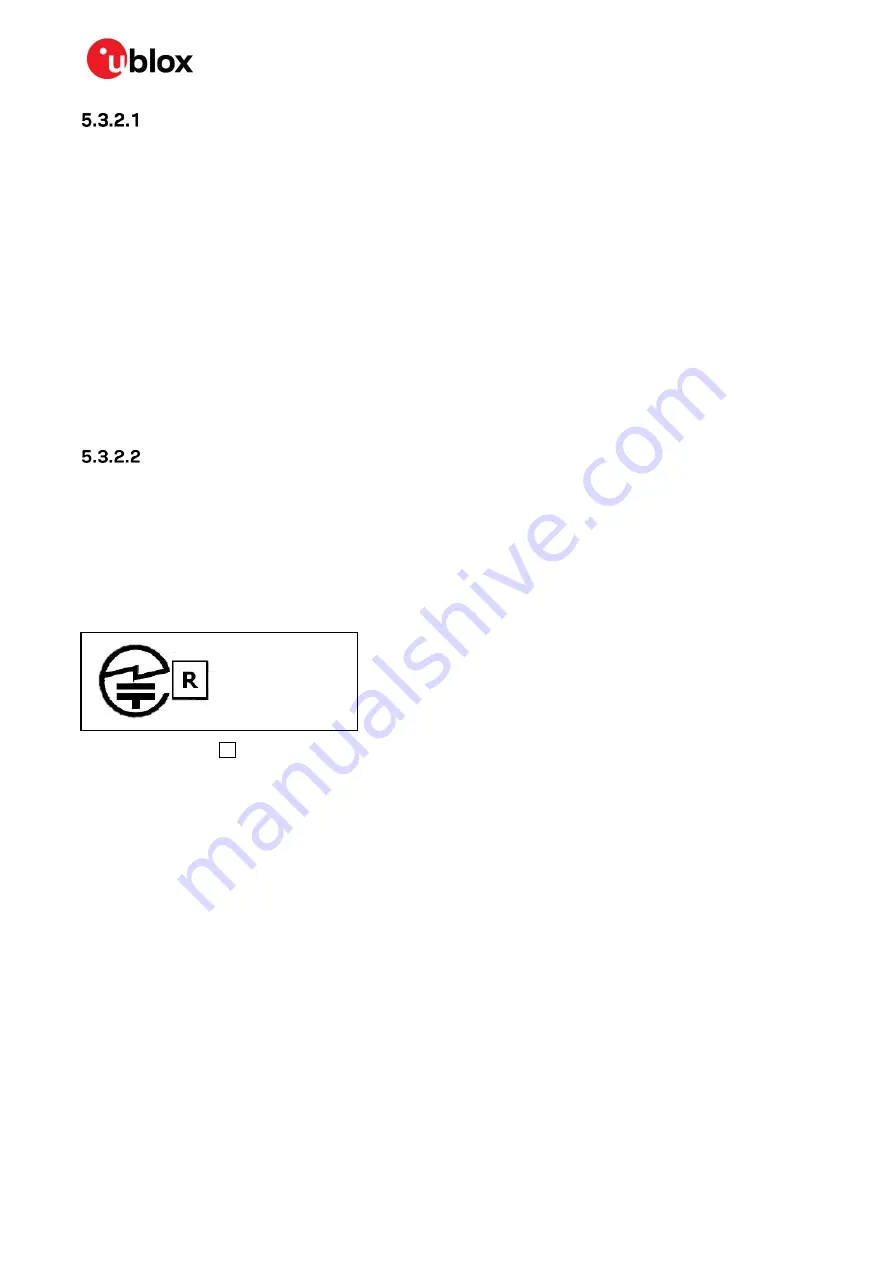
NINA-B3 series - System integration manual
UBX-17056748 - R13
Regulatory information and requirements
Page 54 of 72
C1-Public
Implementation in the NINA-B30 series
The requirements on a NINA-B30 design depend on the used radio protocol(s):
•
The Bluetooth protocol uses 48-bit addressing, no additional effort is needed.
•
IEEE 802.15.4 based protocols, such as Thread and ZigBee, use (at the MAC layer) a combination
of 16- and 64-bit addresses. The 16-
bit (‘short’) address can be used to reduce overhead in
communications. However, each device must have a 64-
bit (‘extended’) address, and can always
be accessed using this address. Because of this no additional effort is needed when using an
802.15.4 based protocol.
•
Protocols based on the 2.4 GHz proprietary mode do not necessarily follow any standards, so there
is no guarantee that the 48-bit addressing requirement will be fulfilled. If the end product can be
connected to, or accessed through, a public network using a proprietary protocol, it is the end
product manufacturer’s responsi
bility to make sure that the protocol uses at least 48-bit
addressing.
⚠
Failure to comply with these requirements will void the NINA-B3 Japan certification, and it will be
illegal to place the end product on the Japanese market.
Implementation in the NINA-B31 series
All the radio communication protocols supported in the NINA-B31 series use at least 48 bit long
addressing. No further actions are required by the module integrator.
5.3.3
End product labelling requirement
When a product integrating a NINA-B3 series module is placed on the Japanese market the product
must be affixed with a label with the “Giteki”
. The marking must be
visible for inspection.
Figure 20: Giteki mark,
R
and the NINA-B3 MIC certification number
☞
The required minimum size of the Giteki mark is Ø3.0 mm.
5.3.4
End product user manual requirement
As the MIC ID is not included on the NINA-B3 series label, the end product manufacturer must include
a copy of the NINA-B3 Japan Radio Certificate to the end product technical documentation.
☞
the u-blox support team in your area to obtain a copy of the NINA-B3 Japan Radio
Certificate.
5.4
NCC
–
Taiwanese market
5.4.1
Compliance statements
•
經型式認證合格之低功率射頻電機,非經許可,公司、商號或使用者均不得擅自變更頻率、
加大功率或變
更原設計之特性及功能。
•
低功率射頻電機之使用不得影響飛航安全及干擾合法通信;經發現有干擾現象時,應立即停用,並改善至
無干擾時方得繼續使用。前項合法通信,指依電信法規定作業之無線電通信。低功率射頻電機須忍受合法
通信或工業、科學及醫療用電波輻射性電機設備之干擾。
204-810006


